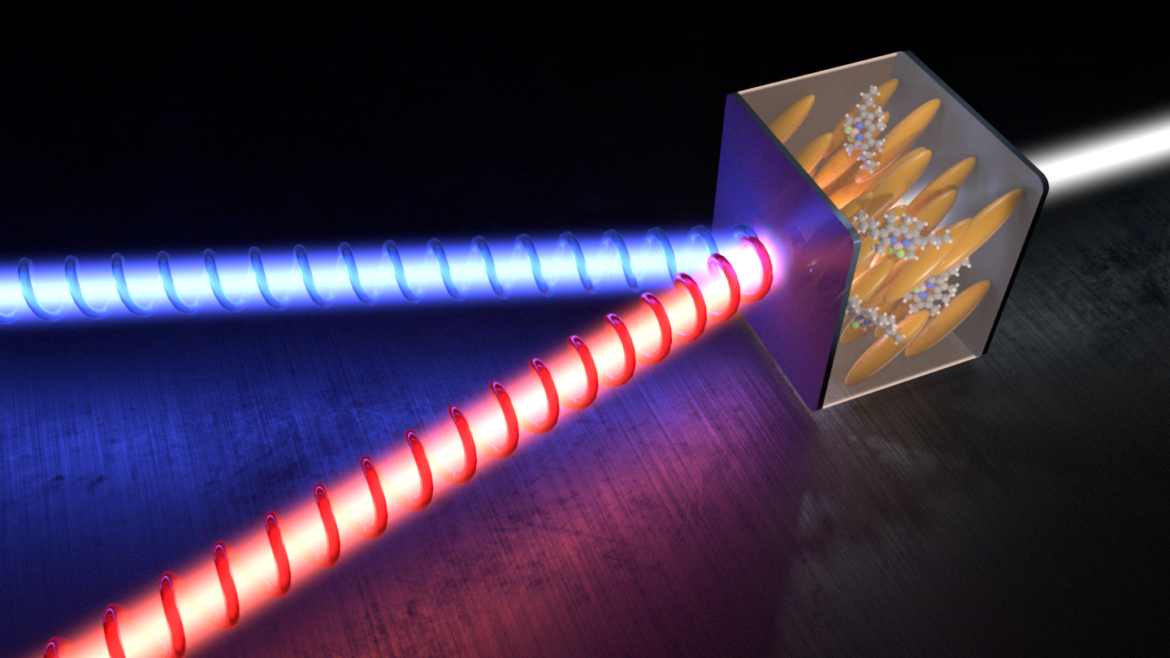Scientists from the University of Warsaw (UW), the Military University of Technology and the University of Southampton have presented a new type of tunable microlaser emitting two beams. „These beams are circularly polarized and directed at different angles” – says Prof. Jacek Szczytko from the Faculty of Physics, University of Warsaw. It was possible to develop the microlaser by creating a microcavity on the surface, the so-called permanent spin helix. The research was published in the journal Physical Review Applied.
In order to achieve this effect, scientists filled the optical microcavity with a liquid crystal and dissolved the laser dye in it. The microcavity consists of two perfect mirrors located close to each other – at a distance of 2-3 microns allowing to form a standing electromagnetic wave inside. The space between the mirrors was filled with a special optical medium – liquid crystal, which was additionally designed using a special coating of mirrors.
“Figuratively speaking, liquid crystals with their elongated molecules, were “combed” on the surface of the mirrors and could stand up under the influence of an external electric field, turning also other molecules filling the cavity”, explains Marcin Muszyński, PhD student at the Faculty of Physics of the University of Warsaw.
“The use of liquid crystals allowed for smooth tuning of the light wavelength by as much as 40 nm with the electric field. However, when we rotated the liquid crystal molecules so that both modes (the one sensitive to the orientation of the molecules and the one that did not change its energy) overlapped (i.e. they were in resonance), the light emitted from the microcavity suddenly changed its polarization from linear to two circular: right- and left-handed, with both circular polarities propagating in different directions at an angle of several degrees,” described Prof. Jacek Szczytko from the Faculty of Physics, University of Warsaw.
Adrian Andrzejewski





